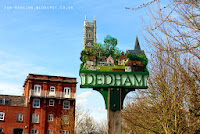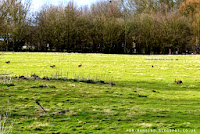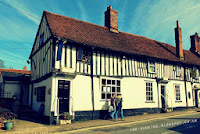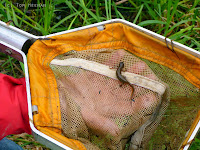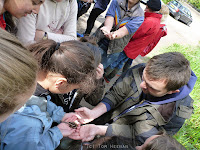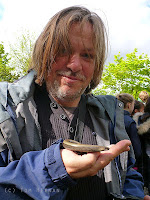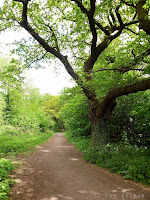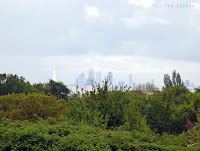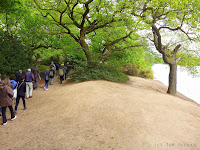Earlier in the Spring (Sunday 14th April), Natasha and I travelled up
to Dedham Vale with her parents for the day, to make the most of the
fine weather. Dedham Vale lies along the border between Essex and
Suffolk, running alongside the River Stour, and includes some beautiful
scenery immortalised by Constable and Gainsborough. See
my photo blog about the day on the Heenan Photography website.
 |
| Beautiful English countryside, beloved by Constable |
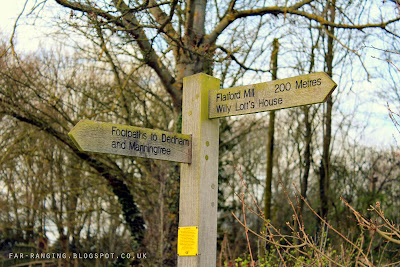 |
| Footpaths to Dedham indeed! |
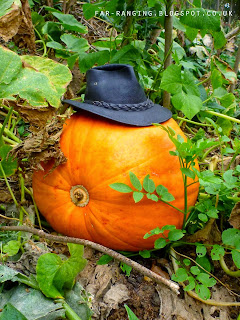 |
| A pumpkin in a fetching hat |
It
was a fine day for walking and wildlife-watching. We parked up near
Flatford Mill, and ate a picnic lunch on a convenient picnic bench on
the grass nearby, covered with lichens, and with the sounds of Great
Spotted Woodpecker and other birds calling in the background brought to
us on the warm breeze. Then we visited the
RSPB Flatford Wildlife Garden, a fascinating place which only opened in the June 2011. The
Wildlife Garden has matured since I visited last (shortly after it
opened); the trees and flowers have established well and the place looks
fantastic.
This was a very
new project for the RSPB back in 2011: Liz Cutting, Administrator for
the Stour Estuary Reserves, said that this was their "first dedicated
wildlife garden". Liz was very enthusiastic about the Wildlife Garden,
adding "it's a different type of venture". The aim is to show people
what they can do in their own garden to make a difference; "gardens
cover almost 3 times as much land as all RSPB reserves put together"
said Shirley Boyle, RSPB Flatford Project Officer. This highlights the
importance of reaching out beyond reserves to engage the public, using
people power to make a difference.
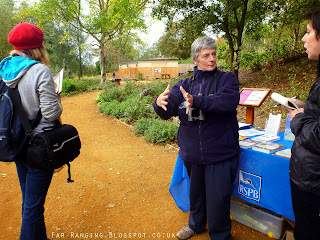 |
| Liz Cutting discusses the new Wildlife Garden |
From the RSPB Wildlife Garden we
crossed the River Stour, briefly pausing on the bridge to watch the
antics of the waterfowl, and the people in boats, on the river. Then we
walked beside the river, along on Essex side, on the footpath to Dedham village. There were sights and sounds of
canada geese, mallard ducks, more woodpeckers, crows... And lots of
whomping willows! The riparian strip showed some alder as well as crack willow, both trees that don't mind getting their feet wet. A
plenitude of people were out enjoying the day; some were walking, some
with dogs, others on boats and in kayaks. Willow warblers and their downward-trilling
song. Hares were running and fighting in a field next to path as we neared Dedham; they romped just on the other side of the hedge, which was budding up and blossoming in places.
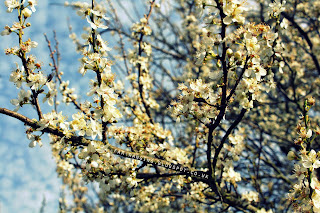 |
| Blackthorn busting into blossom in the hedgerows |
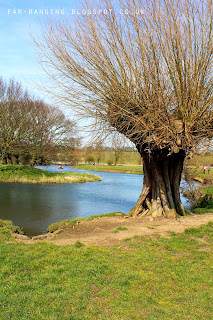 |
| Whomping willows and a plenitude of people |
We walked
into Dedham past the Marlborough Head pub, where ate a pleasant meal on a previous occasion while Natasha and I were down here on an otter course! We walked on
through the village, and paid a visit to the Dedham Art and Craft Centre (this
has an interesting architecture, as it was previously a chapel! High
arched ceiling, stained glass windows, and some headstones on the front
lawn). We walked back past Dedham Hall and Dedham Hall farm, and here we
saw the hares again. We had a view of the same field from a different
side, and much closer! There was also much evidence of birds nesting in
the thick shrubby hedge lining the path and in the branches arching
above our heads.
We arrived
back at the Stour by the old river weir, and returned to Flatford along the river with its contorted, pollarded, fallen and dead
willows. Some were very impressive in size! The flooding on the Suffolk side as we neared Flatford Mill added a sense of an endless river landscape, although the waters finally gave out to low hills dotted here and there with old weatherboarded buildings in the distance. Mallard ducks were noisily pairing
up; the males were trying to anyway, the females seemed less than interested in their advances! We also saw swans feeding on the vegetation at the edges of the
river.
 |
| Family stroll along the Stour, watching wildlife |
All around us nature was getting into the swing of Spring. A song thrush gave throat to its loud lyrical repetitions. The pussy willow flowers bright with yellow pollen, and the catkins drooping on the crack willow. By a stream on our right, red dead nettles almost belied their name with an attractive, deep purplish-red.
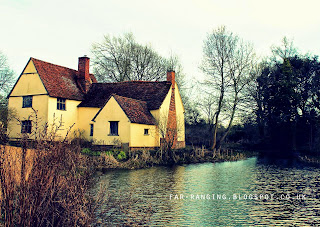 |
| Scene of Constable's "The Hay Wain", bereft of its Elm trees |
Before
departing for the day, I strolled up to Flatford Mill itself, and to Willy Lott's house (the latter
the setting for a famous painting by John Constable). With the iconic elm
trees in the painting gone from the landscape through the effects of Dutch Elm's
disease, I can only wonder if the Ash Dieback disease (Chalara) we are currently hearing so much about will have as dramatic an impact
on our countryside in years to come.








